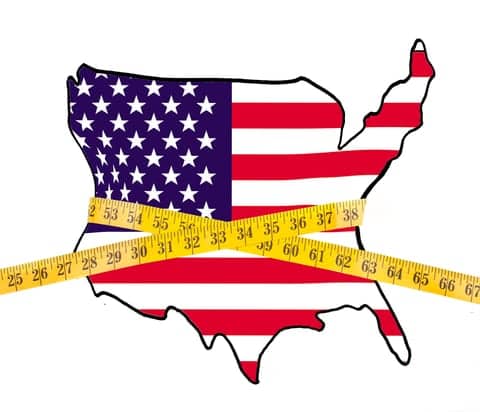A new analysis of data from the National Health and Nutrition Examination Survey (NHANES) reveals that sedentary lifestyles and not caloric intake may be the cause of increased obesity in the United States. The study, published in The American Journal of Medicine, shows that in the past 20 years, there has been a sharp decrease in physical exercise and an increase in average body mass index (BMI) while caloric intake has remained steady. Researchers theorized that a nationwide decrease in leisure-time physical activity may be responsible for the upward trend in obesity rates.
The research team from Stanford University analyzed NHANES data from the last 20 years and discovered that the number of US adult women who reported no physical activity jumped from 19.1% in 1994 to 51.7% in 2010, while for men it increased from 11.4% in 1994 to 43.5% in 2010, as indicated on a Science Daily news report. During this time period, the average BMI has increased across the board with the most dramatic rise found among young women ages 18 to 39 years.
The study looked at the escalation of obesity in terms of both exercise and caloric intake. The researchers also tracked the rise in abdominal obesity, which is an independent indicator of mortality, even among people with normal BMIs, according to the Science Daily news report. Data showed that average waist circumference increased by 0.37% per year for women and 0.27% per year for men.
Uri Ladabaum, MD, MS, lead investigator of the study, states, “These changes have occurred in the context of substantial increases in the proportion of adults reporting no leisure-time physical activity, but in the absence of any significant population-level changes in average daily caloric intake. At the population level, we found a significant association between the level of leisure-time physical activity, but not daily caloric intake, and the increases in both BMI and waist circumference.”
Ladabaum concludes, “Our findings do not support the popular notion that the increase of obesity in the United States can be attributed primarily to sustained increase over time in the average daily caloric intake of Americans. Our analyses highlight troublesome trends in younger adults, in women, and in abdominal obesity prevalence, as well as persistent racial/ethnic disparities.”
Sources: Science Daily, Elsevier





